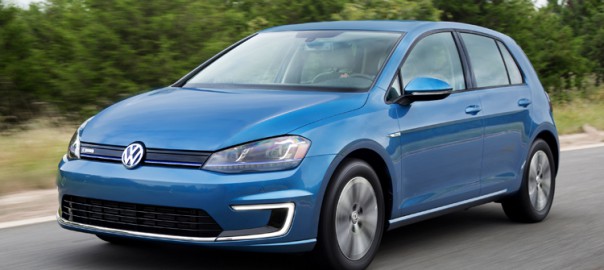About 10 years ago alternative fuel vehicles became become a hot topic as gas prices peaked and consumers started focusing on miles-per-gallon as a primary factor when shopping for a new car. Automakers quickly rallied around their preferred routes to improve fuel efficiency. Some took the hybrid/electric path, some talked up fuel cells, other brands (primarily European car companies) continued to tout diesel as the answer to our fuel efficiency quandaries. But things have changed in recent years, with most automakers realizing they can’t stick to a single alt fuel strategy. The wide range of consumer demands and government regulations related to fuel efficiency requires a comprehensive alternative fuel plan, one that incorporates multiple solutions.
Volkswagen is a shining example of a modern car company embracing this multi-pronged approach. VW has long been the leader in the diesel segment. Year-to-date, over 23% of all Volkswagen sales in the U.S. have featured clean diesel technology, a much higher percentage than overall industry sales for diesel, which make up barely 3% of the total U.S. market. But in the last two years the German automaker has displayed a flurry of activity around plug-in hybrids and electric vehicles, including the revolutionary XL1 and the new all-electric 2015 Volkswagen e-Golf. We recently had an opportunity to visit Volkswagen’s factories in Wolfsburg and Braunschweig to take a closer look at the new e-Golf and hear Volkswagen’s plans for electrification. Just a few years ago we couldn’t have imagined such an experience with VW, yet the company’s rapid progress in the field of electric cars is impressive.
Because VW has multiple variants of the Golf (diesel, all-electric or plug-in hybrid), and because the Golf now utilizes VW’s new modular platform, the automaker can shift assembly line configuration in short order. It has the ability to produce up to 1,100 alt fuel Golfs per day, though as of now only about 70 e-Golfs are being assembled daily. They went on sale in select U.S. states in early November. If demand warrants it Volkswagen can easily shift that number (up or down) to match consumer interest. This flexibility makes sense in a world where gas prices can pivot on a geopolitical headline or natural disaster. But it also begs the question – is Volkswagen building these electric variants because it sees a need to meet broadening consumer demand? Or is it simply positioning itself to address future regulatory requirements? The answer may not matter, as enhanced production flexibility is the wave of the future. Automakers that don’t master it will be at a major competitive disadvantage.
Volkswagen Automotive Group’s ‘modular toolkit’ production system, utilizing four major platforms to address the entire group’s vehicle needs, continues to roll out across brands and models. The all-new 2015 Golf is one of two early vehicles built off the new MQB platform and already on sale in the U.S. (the 2015 Audi A3 is the other one). Because of this system Golf production, including body styles and drivetrain configurations, can be shifted almost instantaneously. However, production capacity and flexibility is only half the battle. One of the main hurdles Volkswagen’s new e-Golf will face is an electric car market saturated with vehicles offered at the same price and touting the same battery range.
Source: Forbes
